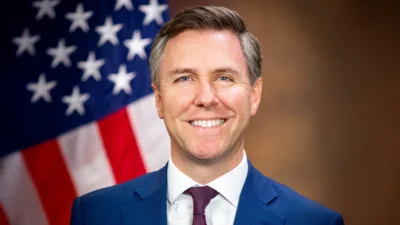Energy and Commerce Chairman Frank Pallone, Jr. (D-NJ) delivered the following opening remarks today at a Health Subcommittee hearing on “Prescription Drug Coverage in the Medicare Program:"
Today we are continuing this Committee’s important work in providing Americans relief when it comes to the skyrocketing price of prescription drugs. We have already passed several bills that will remove barriers that delay cheaper, generic drugs from coming to market. And today we’re focusing on the rising costs of prescription drugs in the Medicare program so we can begin to think about solutions to drive down costs for America’s seniors and for the federal government.
We have all heard the stories about Americans who cannot afford their medications, who are rationing their life-saving therapies, or choosing not to fill their prescriptions because they instead need to put food on the table. At the same time, we have watched as prescription drug spending continues to cost the federal government more and more each year. We cannot afford to wait any longer to fix this broken system.
The way drug prices are set, and the opaque drug supply chain, has fostered a system that can be gamed for profit at the expense of seniors who need access to affordable medicines.
I’d like to thank James Mathews, the Executive Director of the Medicare Payment Advisory Commission, for testifying today on this important issue. MedPAC is a critical resource to Congress and provides invaluable nonpartisan policy recommendations on how to improve the Medicare program for beneficiaries. MedPAC has conducted significant work on prescription drug pricing in the Medicare program and I look forward to hearing from Dr. Mathews on how we pay for drugs under Parts B and D and how we can lower drug costs.
This is particularly concerning in the Part D program, where high cost specialty drugs represent a large and growing share of Part D spending. According to MedPAC s spending for specialty drugs has grown more than ten times since the beginning of the Part D program. That growth resulted in specialty drug claims making up nearly a quarter of all gross Part D spending in 2017. And it is now estimated that between 2019 and 2023, nearly two-thirds of newly launched drugs will be considered specialty drugs.
These high cost specialty drugs are partly responsible for the fact that each year more beneficiaries are reaching the catastrophic phase of the Part D benefit. In 2016, over 360,000 Medicare beneficiaries reached the catastrophic limit of $4,850 out of pocket threshold in just one visit to the pharmacy. That’s a significant jump from only 33,000 beneficiaries in 2010. This leaves beneficiaries, particularly those with serious, chronic or life-threatening diseases at risk for substantial out of pocket costs.
I look forward to hearing from Dr. Mathews about MedPAC’s proposal to add an out-of-pocket limit to the Part D program. I hope we can work together on a bipartisan basis to implement some of these ideas in order to provide seniors with peace of mind that they will be protected if they need these high cost therapies.
MedPAC has also noted that the current structure of the Medicare Part D program may be eroding incentives for Prescription Drug Plans (PDPs) to control costs. Currently, the federal government pays 80 percent of the costs for Part D benefits in the catastrophic phase of coverage. This means that payors may not be incentivized to effectively manage costs for their most expensive enrollees since the government is footing most of the bill.
We’ll also discuss Part B drug spending, which has increased at an average rate of almost 10 percent annually for the past decade. These increases are primarily driven by rising drug prices, which have a direct impact on out of pocket costs for beneficiaries because most beneficiaries are responsible for paying a 20 percent coinsurance on their Part B drugs. I look forward to examining proposals to slow rapid price growth and increase competition in the Part B drug program.
While more groundbreaking drugs are coming to market that are saving lives, increasing quality of life, and helping seniors to better manage diseases, these therapies often come with price tags that are unaffordable for the average American. These prices also represent a significant, long-term financial challenge to the federal government and to the Medicare Program. We must find solutions that promote greater affordability and access, and I look forward to the discussion today.




